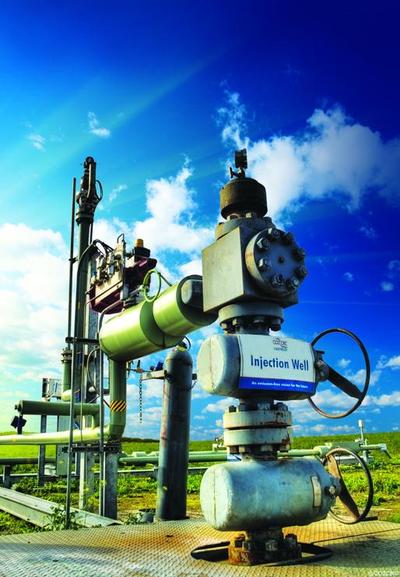Network of CCS research facilities announced
Resources and Energy Minister Gary Gray yesterday announced a network of research facilities to boost Australian development of commercial-scale carbon capture and storage (CCS) during a visit to the CO2CRC Otway Project.

Lead agency The Cooperative Research Centre for Greenhouse Gas Technologies (CO2CRC) will be eligible for $51.6 million from the Australian Government’s Clean Energy Future package, administered by the Education Investment Fund (EIF), to support CCSNET - a network of field facilities, onshore and offshore monitoring systems and world-class laboratories. Funds may also come from research institutions and industry and state government co-investors.
The network includes:
- The Otway Subsurface Laboratory: a major subsurface laboratory based at the CO2CRC Otway Project in Victoria, where CO2 has been stored safely underground since 2008.
- GipNet: a CSIRO-driven submarine environment monitoring program in Victoria’s offshore Gippsland Basin.
- CCS Labnet: a new imaging and analytical research capability at The Australian National University, The University of Melbourne, Monash University and The University of Adelaide.
The University of Melbourne looks forward to being involved in the network. Professor Geoff Stevens, Director of the Peter Cook Centre for CCS Research at the university, said the funding for CCS Labnet and the Otway Subsurface Laboratory “helps University of Melbourne researchers to continue to play a critical role in the development of CCS technology as a viable alternative energy for the future”.
His colleague Professor Mike Sandiford, Director of the Melbourne Energy Institute and the School of Earth Sciences, added that the investment “will provide University of Melbourne geoscientists with access to world-leading subsurface facilities enabling new experiments designed to understand how to safely and securely store CO2 at scale”.
CO2CRC Chief Executive Dr Richard Aldous said CCSNET will “significantly enhance Australia’s CCS research capability”, helping to answer “many of the outstanding research questions for large-scale CCS projects”. Treasury figures estimate fossil fuel-fired CCS plants could provide between 26 and 32% of total electricity generation by 2050, while permanently storing up to 90% of their emissions.
CCSNET will primarily support Victoria’s CarbonNet Project, which is funded under the $1.18 billion CCS Flagships program, but the facilities will also be available for other Australian projects and potentially international collaborators.
“CCSNET will provide a unique basis for quality national and international CCS research, education and training,” said Dr Aldous.
Japanese investment accelerates Aussie cleantech
Mitsubishi Ube Cement Corporation has announced a US$5 million investment into Australian mineral...
Yarra Valley Water nominated for global water award
Yarra Valley Water has been named as one of four finalists shortlisted for the Public Water...
Officeworks launches all-women-led commercial solar project
The commercial solar initiative is in partnership with Smart Commercial Solar and AWISE and...








